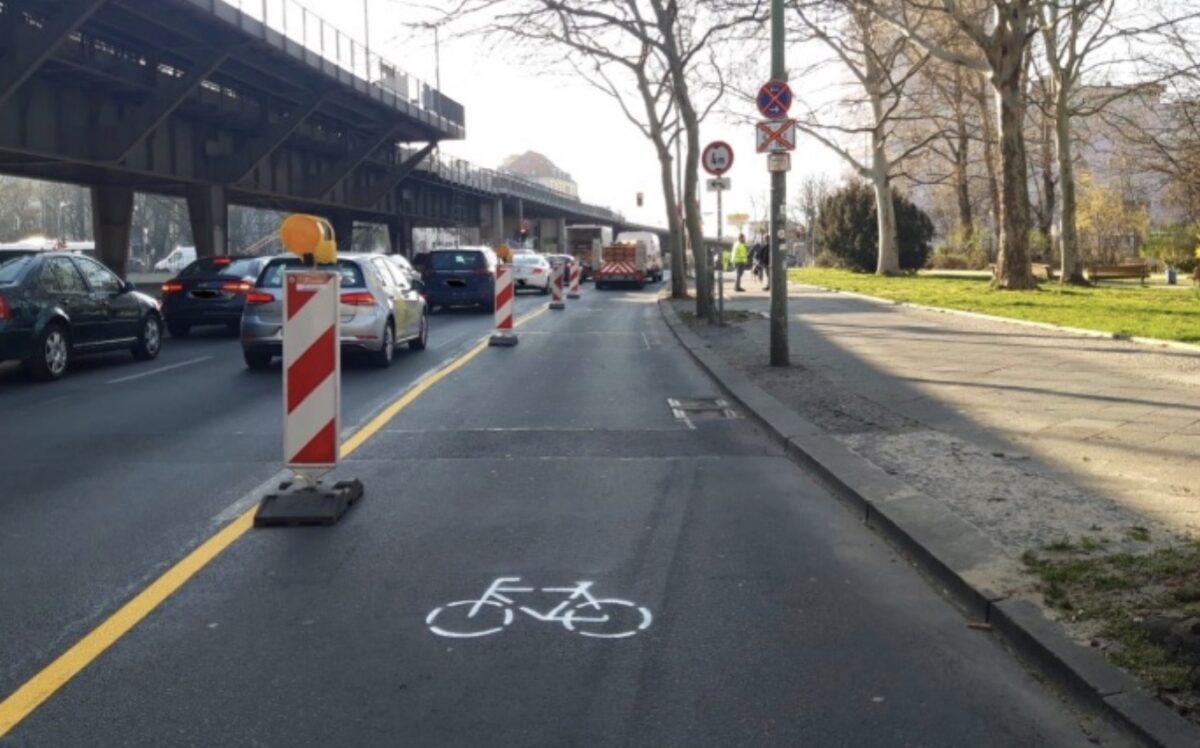
(Photo: District office Friedrichshain-Kreuzberg of Berlin)
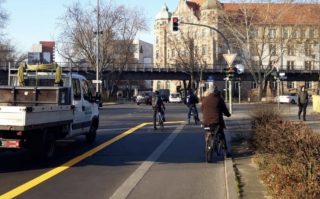
The idea of making temporary changes to streets to address new traffic realities during the coronavirus pandemic gains steam every day. Simply put, requirements for healthy social distancing are not possible when people who use cars take up the vast majority of space on our streets. People who walk, bike, and use mobility devices are squeezed into narrow spaces which force them to make a terrible choice: Remain on sidewalks or bike lanes and catch or spread the virus, or veer out onto the street where they could be struck by a car user.
In the past week, the idea of social distancing-compliant streets has moved quickly from activists to governments.
The city of Berlin is one of the first I’ve heard about to expand cycling space specifically in response to the pandemic. In a statement made today, the Friedrichshain-Kreuzberg district office said they’ve implemented two projects already. Via Google Translate, “The primary aim of the measure is to enable the currently increasing use of the bicycle while maintaining the safety distances in accordance with the Covid-19 containment regulation. Positive aspects of traffic safety in road traffic can thus be combined with support for the applicable infection protection requirements.”
As you can see in the images, they used temporary materials including plastic bollards, stencils and striping to achieve the desired lane reconfigurations.
For more inspiration, we can look to Calgary, Alberta-based 02 Planning + Design. They just released four graphics showing basic guidelines for how to make streets social distancing compliant:
Closer to home, Toole Design (whose local office includes Senior Engineer Rob Burchfield, the former PBOT City Traffic Engineer who led the implementation of our first protected bike lane on SW Broadway in 2009) says it’s “Time to adapt.” In a post yesterday, the firm outlined five strategies to implement during the pandemic: Implement bikeways quickly, reduce risk by bringing down vehicle speed and volume, find ways to allow for socially distant outdoor time, eliminate pedestrian crossing push-buttons, and use curbside management to facilitate pick-up and drop-off.
Advertisement
In New York City, noted nonprofit Transportation Alternatives has reached out to their Department of Transportation with a list of potential streets, “That could be converted into social distancing-friendly places for people.” NYC Mayor Bill de Blasio has announced a plan that will create two streets per borough that will be open only for biking, walking and rolling.
Another example comes from the city of Denver, Colorado where City Councilor Chris Hinds has asked his Mayor to consider closing streets to drivers, “To increase social distancing opportunities while walking and biking.” “We’re all sheltering at home, so there are far fewer demands for drivers who need to get from A to B, so let’s use those streets for people,” he said.
Portland’s parks bureau took a great step forward today by banning cars in several major local parks. So far PBOT Commissioner Chloe Eudaly has said she’s working on something but we haven’t seen any details.
While we wait to hear more, let’s put our heads together and come up with a list of streets that could be easily reconfigured for social distancing. (Keep in mind we’re only talking streets managed and owned by the City of Portland (not Multnomah County or Oregon Department of Transportation).)
Here’s a few off the top of my head:
— Sandy Blvd from the Central Eastside to city limits (not necessarily all of it, but why not consider all sections?)
— N Willamette Blvd from Interstate to University of Portland.
— NW 13th from Johnson to Burnside
— NW Front
— NW Nicolai
— SW Barbur (inner section that PBOT owns)
— Calle Cesar Chavez
— E Burnside
Where else?
— Jonathan Maus: (503) 706-8804, @jonathan_maus on Twitter and jonathan@bikeportland.org
— Get our headlines delivered to your inbox.
— Support this independent community media outlet with a one-time contribution or monthly subscription.




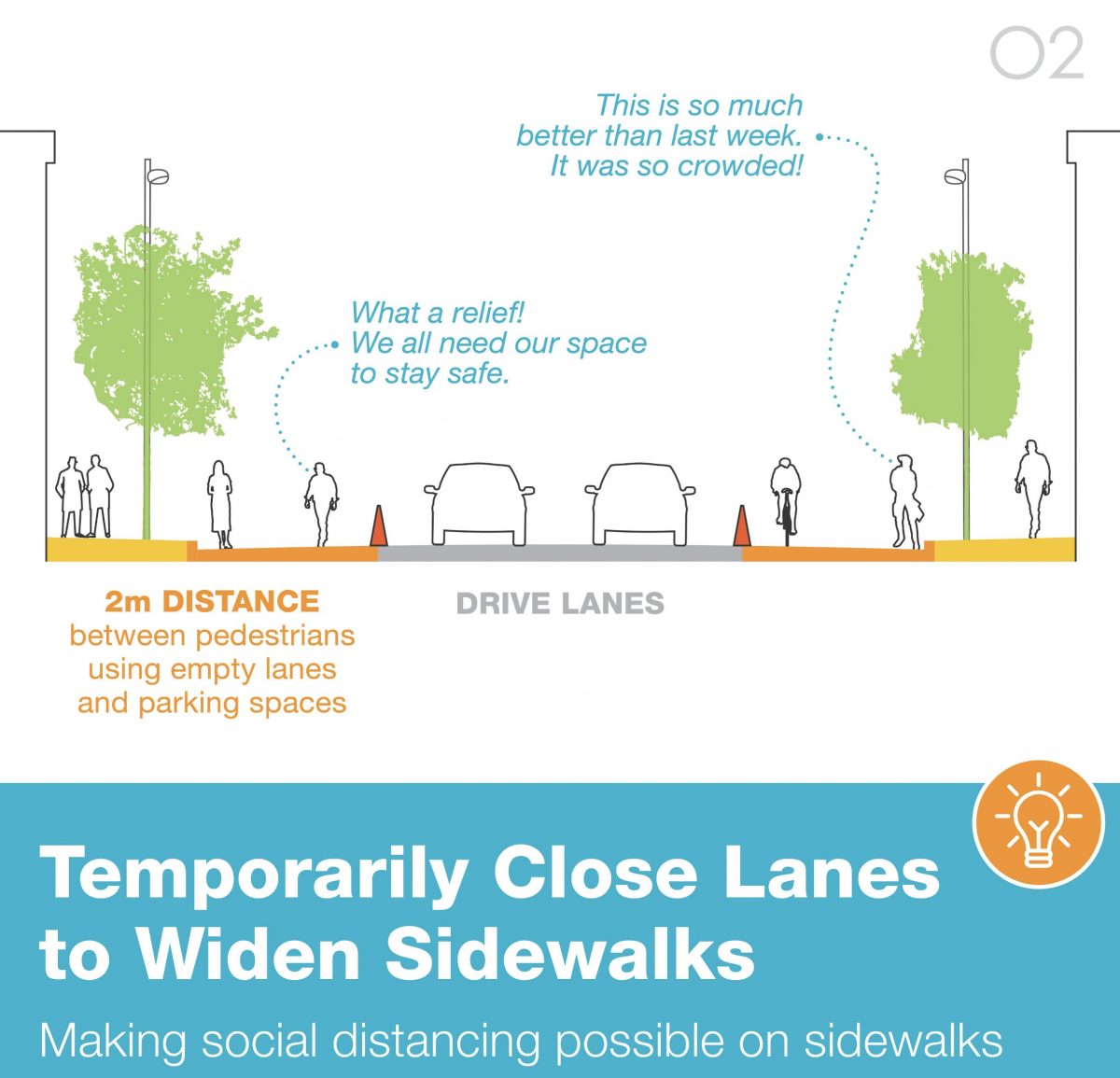
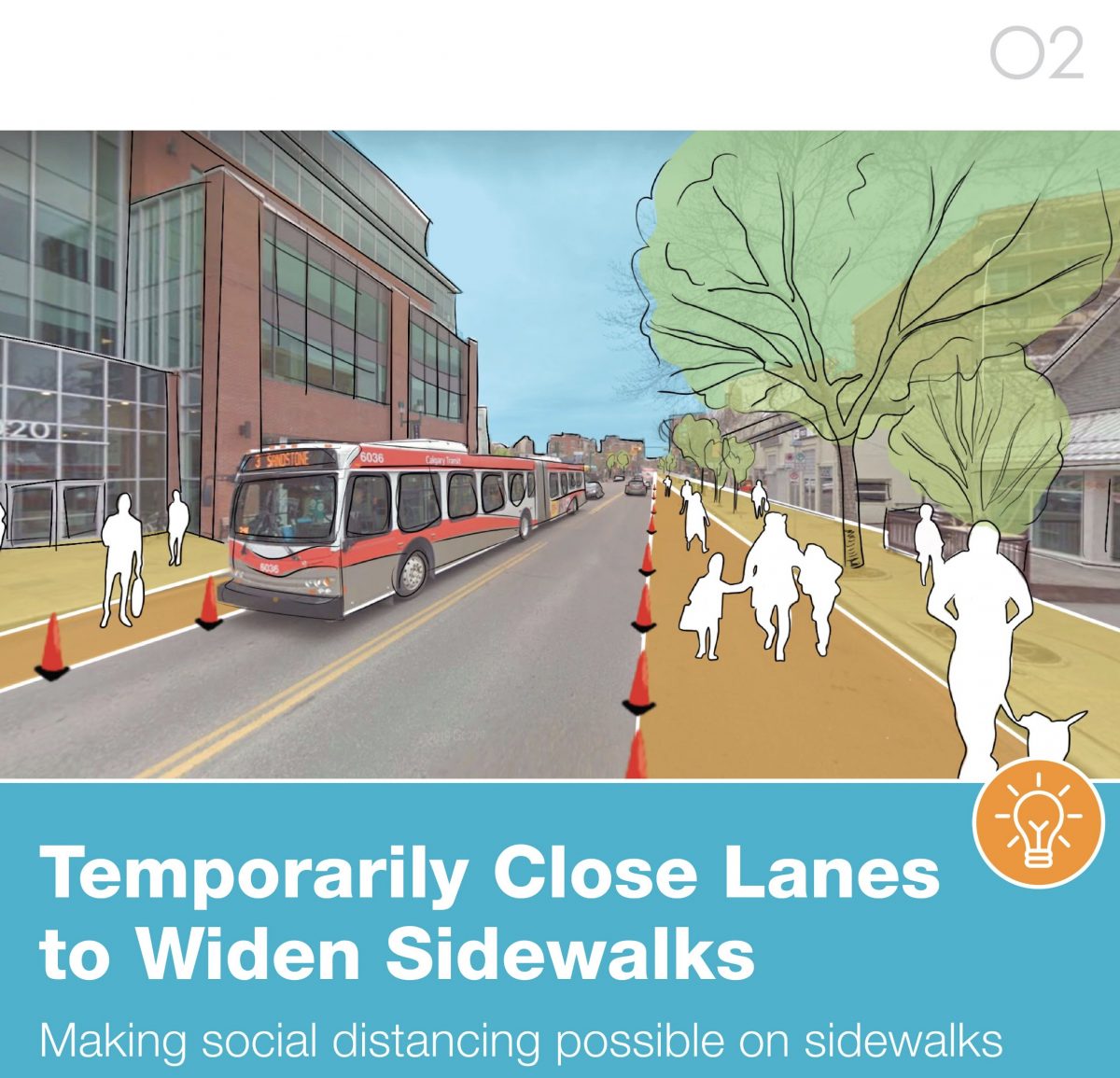

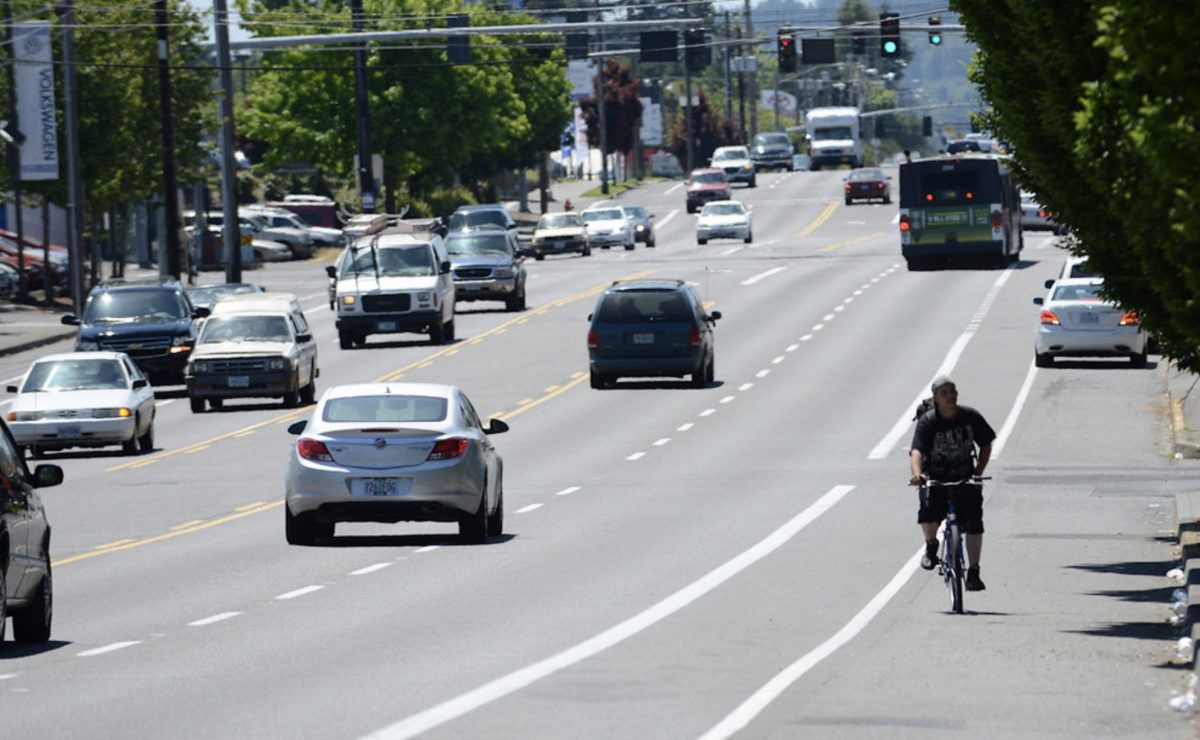

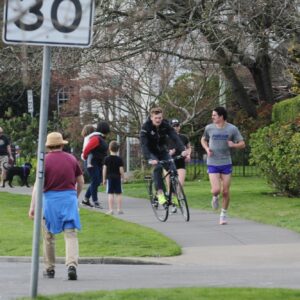
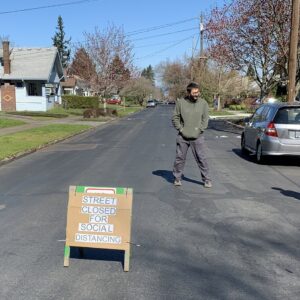
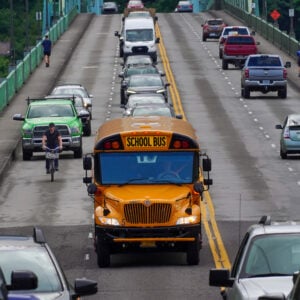
Thanks for reading.
BikePortland has served this community with independent community journalism since 2005. We rely on subscriptions from readers like you to survive. Your financial support is vital in keeping this valuable resource alive and well.
Please subscribe today to strengthen and expand our work.
39th would be a great candidate. Those sidewalks are criminally narrow, and right next to the travel lane. Maybe try it as bus/bike only right lane for the next 6 months?
Convert all the neighborhood greenways into true greenways. Using quick build and DIY, implement local car traffic only, “cars as guests” signage, recycle bin traffic diverters, and temporary paint to separate walking and riding paths. Do ‘quick build’ and release now for a trial period, and make permanent when resources are freed up.
No. 5-10% of the population should not be dictating (or have power over) the other 90% in such a non-Democratic manner.
Have you heard of the Electoral College. Our last election came down to about 800,000 votes in just a few swing states.
Or bureaucracy? Most decisions in most cities (and states) are “administrative decisions” made by a group of appointed individuals working for government agencies (including PBOT). Very little is actually decided by city councils or legislatures.
This is some tiresome flup.
The 90% who do not walk?
It’s important to note the scope of Tom’s argument: He’s talking about greenways…not every road surface in Portland. For being greenways, they tend to invite a lot of road traffic and are hardly stress-free. And what he is suggesting isn’t even banning cars: just make it accessible to local traffic only. It’s hardly a revolution and honestly what should have been done in the first place. Most of these greenways are hardly major throughfares…or designed to be such, so it’s not like you’re losing anything here.
Some bridge, somewhere. There’s no place that I know of for a bike, pedestrian or jogger to safely get across the Willamette. The Tillicum is close, but still a game of dodgeball at times.
I just rode south from Trader Joe’s to Ramona street on the western sidewalk, but am no criminal.
Not bad, but motorists speed dreadfully and cut corners. It is worth one’s life to ride in the street there.
I am old and slow, but faster folk definitely deserve better facilities there, and just about everywhere else.
Off-topic of both bicycling and the virus… what else do you notice in the Berlin pictures? Railroads everywhere. So jealous of people living in civilized countries!
I’ve visited Germany 8 times over the years and I’ve always noticed that Germans largely obey the law, that enforcement is often unnecessary, that they don’t drive cars on the super-wide buffered bike lanes (unlike many Americans who mistake them for HOV lanes). On the other hand, I pity anyone who is disabled there, the sidewalks are rough flagstone, brick or cobblestone and often ridiculously narrow without ramps.
But I haven’t been to Berlin.
Sandy from 105th to the city limits is still an ODOT facility, but I’m sure they would also be willing to close off lanes, as they would on Lombard, 82nd, Barber, and all of Portland’s other fine orphan highways.
Beaverton-Hillsdale Hwy! There are no sidewalks to begin with, so close down one lane in each direction.
yes! So much of SW lacks sidewalks. When I bus commuted to SW I would have to walk on the shoulder a lot. Even a temporary lane of cones would be be nice.
I would love this as much as anyone, but do we really think the Average American is going to believe that getting out of their car is better social distancing than staying in their car? This whole deal is an automaker’s dream come true! Don’t die riding the bus! Don’t go outside! Don’t risk bumping into someone on the sidewalk! What you need is a bigger car so you can roll up the windows and stay away from all of those people.
Comment of the week.
122nd Ave, Outer Powell Blvd (PBOT controlled after HB2017), 162nd Ave